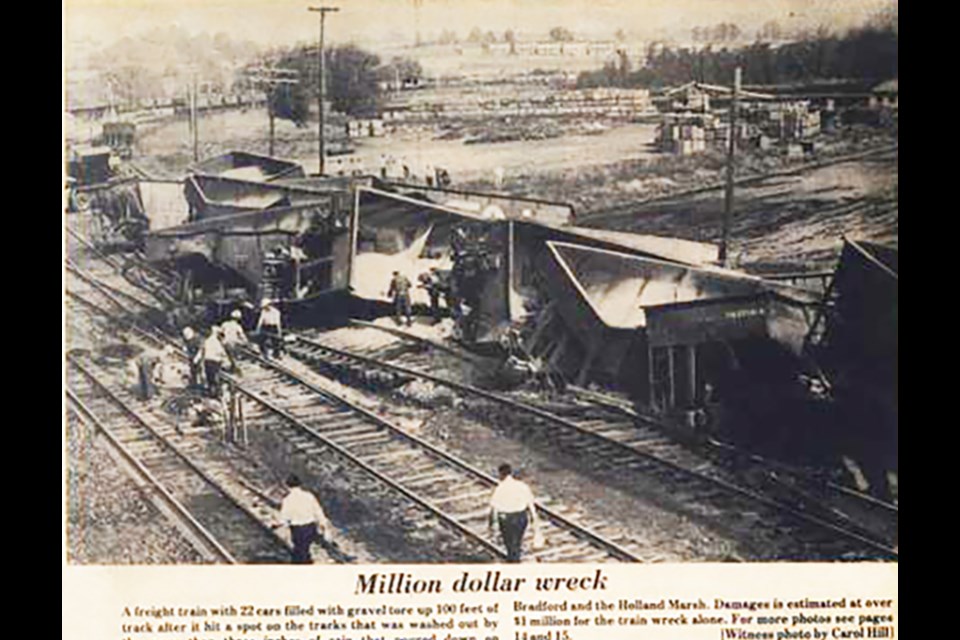There were a number of near misses in the wake of Hurricane Hazel, which roared into Ontario on Oct. 15, 1954. Brothers Eddie and Paul Renald were heading along Line 14 to pick up groceries at Fennell’s Corners, when their vehicle plunged off the washed-out Line 14 bridge and was swept about 100 metres downstream, before coming to a rest. The brothers smashed the windshield and managed to reach land, suffering only bruises, cuts and a broken arm. The car was a total wreck.
In June 1957, a family of five from New York was returning home from Muskoka in a small amphibious plane, when the aircraft ran out of fuel on the edge of the Holland Marsh, near Hochreiter Gardens. Attempting to land on the river, the pilot misjudged the height of a dyke and crashed, flipping the plane over. “Only the softness of the marsh” saved the family from suffering more than broken bones, bruises and cuts, read reports.
Disaster was also averted at The Village Inn in September 1957, when firefighters were called there for a report of smoke filling the hallways. They tracked the smoke to a room, vacated two hours earlier, and discovered a mattress and bedding on fire. The firefighters threw the mattress from the window and cleared the building of smoke. The cause was believed to be a smouldering cigarette.
In May 1975, the actions of an “unidentified man” may have saved the lives of a Canadian National Railway crew. There had been a violent storm that dumped a reported 76 millimetres of rain, washing out approximately 30 metres of track behind Hardee Farms in Bradford. A freight train was southbound on the track when a man at roadside suddenly appeared, waving a flashlight in an apparent attempt to warn the train. The engineer didn’t understand the significance of the signalling, but slowed the train from 80 km/h to about 30 km/h per hour. At the slower speed, the 20 cars filled with gravel still derailed, causing an estimated $1 million in damage, but the crew all survived the crash.
Perhaps the biggest disaster averted in the town’s history was a potential mass casualty situation in Bradford. In the early morning hours of July 29, 2001, a 39-year-old Bradford man was shot and seriously wounded outside the former Trophy Case bar and restaurant. The suspect was 38-year-old Mark Norman Graham, of no fixed address. Later that afternoon, South Simcoe Police officers spotted the suspect, described as armed and dangerous, wearing army camouflage and dark pants, and carrying a backpack. Officers, weapons drawn, ordered the man to stop and put down the backpack. Instead, he kept walking towards a Tim Hortons on Holland St. E., crowded with customers. Graham continued to ignore the orders of officers. It was when he appeared to reach for his backpack that the officers opened fire — killing the suspect. A sawed-off shotgun was discovered in the bag. Was Graham reaching for his gun? Would he have opened fire or tried to take hostages? The Special Investigations Unit (SIU) cleared the officers of wrongdoing.
Sources: From the Bradford West Gwillimbury Public Library Archives and other online sources.




